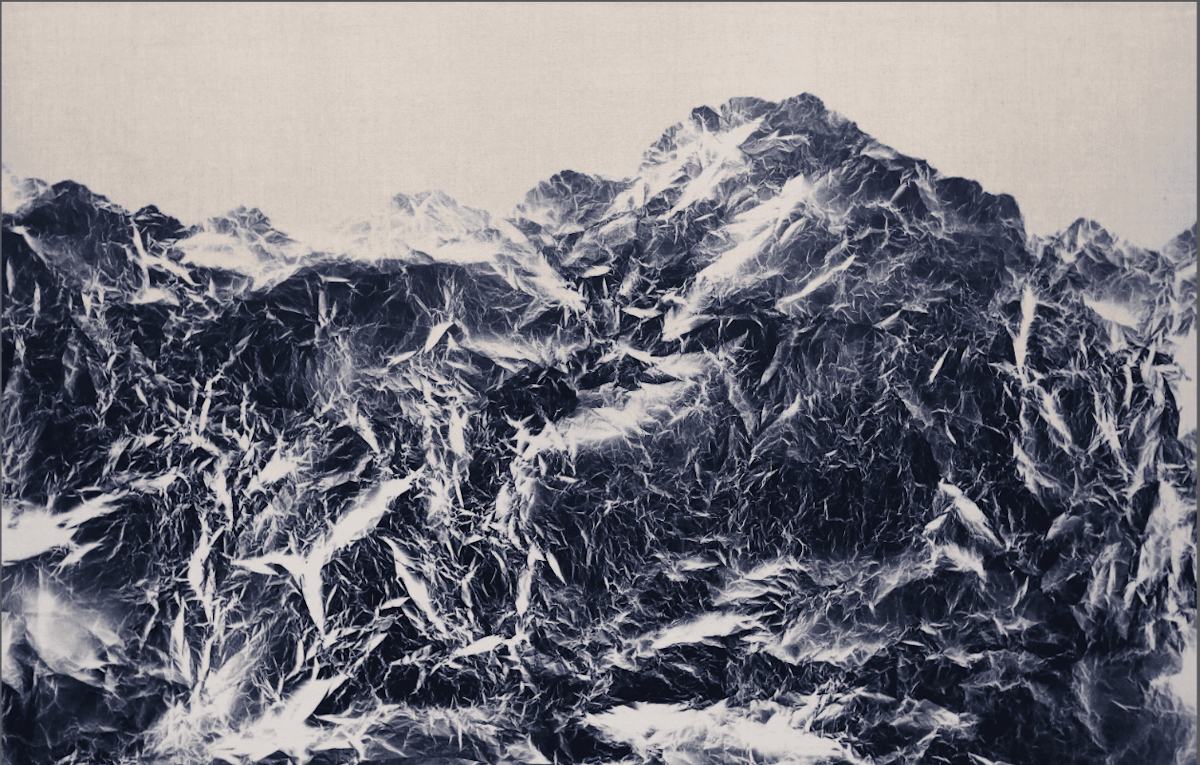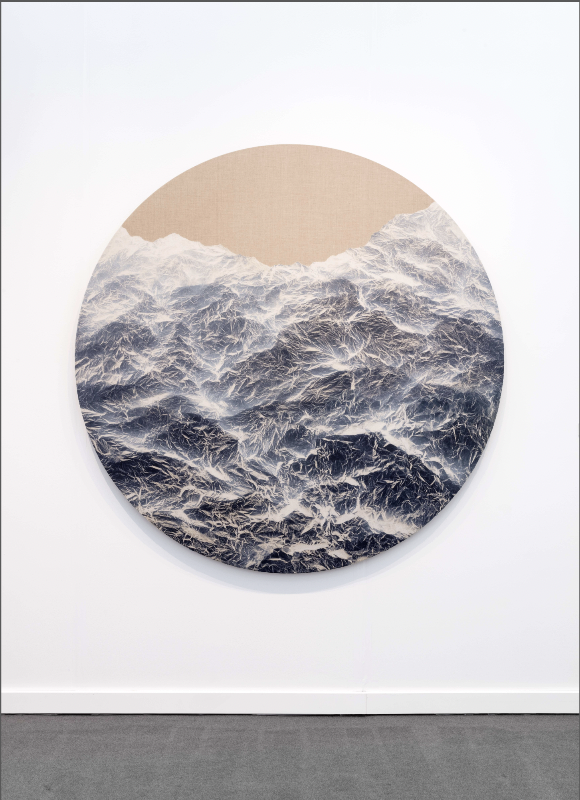Too Real, Yet Too Wild To Be Believed: the Fantasy Landscapes of Wu Chi-Tsung at the Katonah Museum of Art
The Taiwanese artist presents images that appear both hyperreal and indeterminate, a vision of nature that resists any fixed reading.

‘Wu Chi-Tsung: Synchronicity’
Katonah Museum of Art, 134 Jay Street Katonah NY, 10536
Until October 1, 2023
Exploding universes in motes of dust, impossible mountain ranges out of crumpled paper: Wu Chi-Tsung’s current retrospective at the Katonah Museum of Art is devoted to finding the immense grandeur of the natural world in the simple and the mundane.
The museum, just north of New York City, is an aptly bucolic venue for an artist who has sought to radically reinvent the tradition of Chinese landscape painting through photography, mixed media, and video.
A native of the Republic of China on Taiwan, born at Taipei, Mr. Wu has caught the attention of the art world by putting down his traditional calligraphic brush and ink and picking up a camera in its place.
After formal training in classical calligraphy and brush painting, Mr. Wu’s approach took a more contemporary and interdisciplinary turn once he attended the Taipei National University of Arts.
Though traditional Chinese painting masters may disagree, he contends that his radical approach to the centuries old discipline — jealously guarded and formal in its traditional form — is still in direct keeping with the earlier masters of the genre.
“I’ll say it’s really similar with what ink painters do with landscape,” he says of his technique of cyanotype collage. “Because they are creating worlds they want to project themselves inside of. I am doing the same thing.”
Mr. Wu coats traditional Xuan paper with a layer of photosensitive chemical instead of ink, an early photography technique known as cyanotype. He then crumples the paper and exposes it outside in the sun until it dries.
Once it is properly exposed, he then meditatively applies strips of it with clear acrylic and squeegee onto an aluminum backing, building surfaces that give the impression of tremendous mountainous ridges.
The results are fantasy landscapes that appear both hyperreal and indeterminate, boldly presenting a vision of nature while resisting any fixed reading.
“Cyano Collage 066,” completed in 2019, is one such work. A majestic, nearly wall-sized rectangle set against a gold background, it could be the computer-generated topographic map of a mountain range so gigantic as to defy imagination. One thinks of mountains on Mars or one of Jupiter’s moons.
His large circular collages similarly radiate the disquieting sense of being both too real and too wild to be believed, of impossible mountain ridges or the roiled surface of gigantic oceans. The palpable feel of nature is present, in other words, but without the reference point of an actual natural landmark.

Only through scrutiny does it become obvious that we are not witnessing a mountain or ocean at all. We are bearing witness to a process. These works are not the result of representation so much as they are of application, of material applied patiently over many hours and days.
Mr. Wu builds up the grandeur of mountain ridges and peaks by mimicking actual natural processes, or through the steady application of material and pressure onto a surface. In this way, he demonstrates directly how the grand scale of nature manifests itself.
Not in a single, bold act of creation, but over immense stretches of time, with the simplest materials and the most elemental gestures.
Mr. Wu also uses similar, simple techniques to investigate our natural assumptions about scale in the natural world. In the immersive installation “Dust,” Mr. Wu uses a bright light and lenses to project the swirling motions of the dust particles onto a wall.
The idea of dust in a room magnified sounds positively underwhelming. In this installation, however, the swirling motion of motes is transfigured into a mesmerizing dance that brings to mind swirling stars or galaxies. Our sense of scale is collapsed to reveal the macrocosm in microcosm, showing how the small, still air we breathe is fundamentally linked to cosmic events.
Mr Wu’s devotion to simple materials and processes appears to be deeply congruent with classical Chinese painting’s Taoist ethos. He is showing us that nature is not an external or rarified phenomenon so much as it is everywhere present, visible, and palpable at every turn.
To this end, Mr. Wu sees himself not so much as a creator but rather as a facilitator of his materials. Through his meditative artistic practice, he produces natural images by invoking and manifesting the natural world we are all immersed in.
As he said in a recent interview: “I’m helping material find its own being, while at the same time I am opening myself.”

